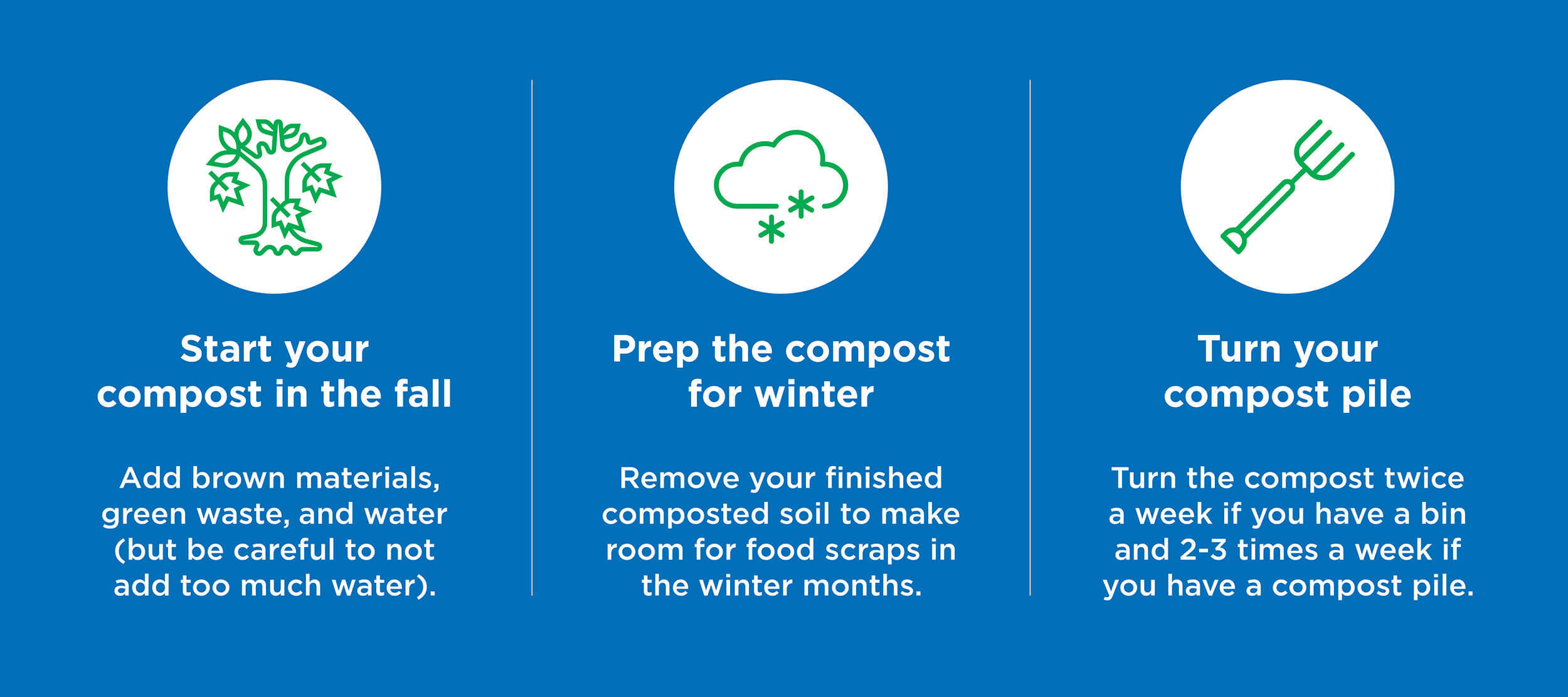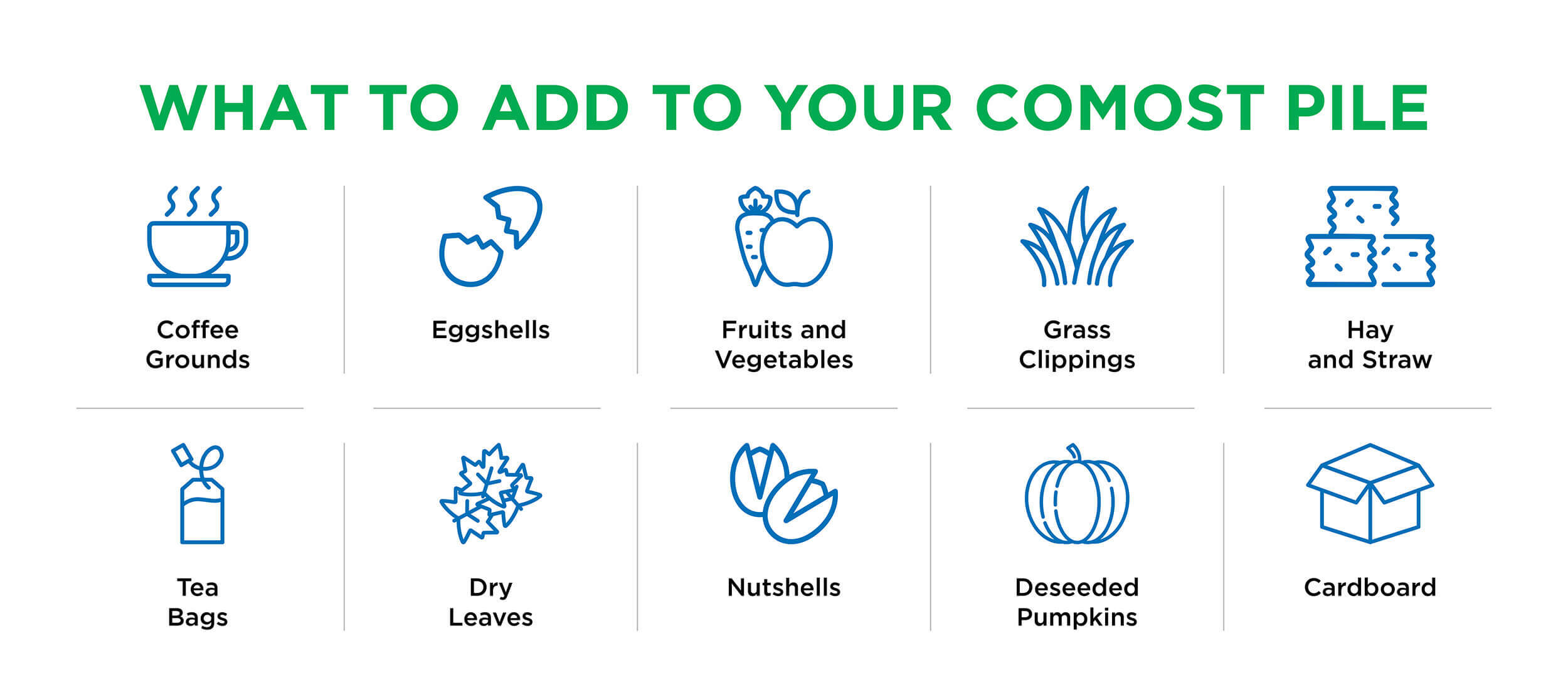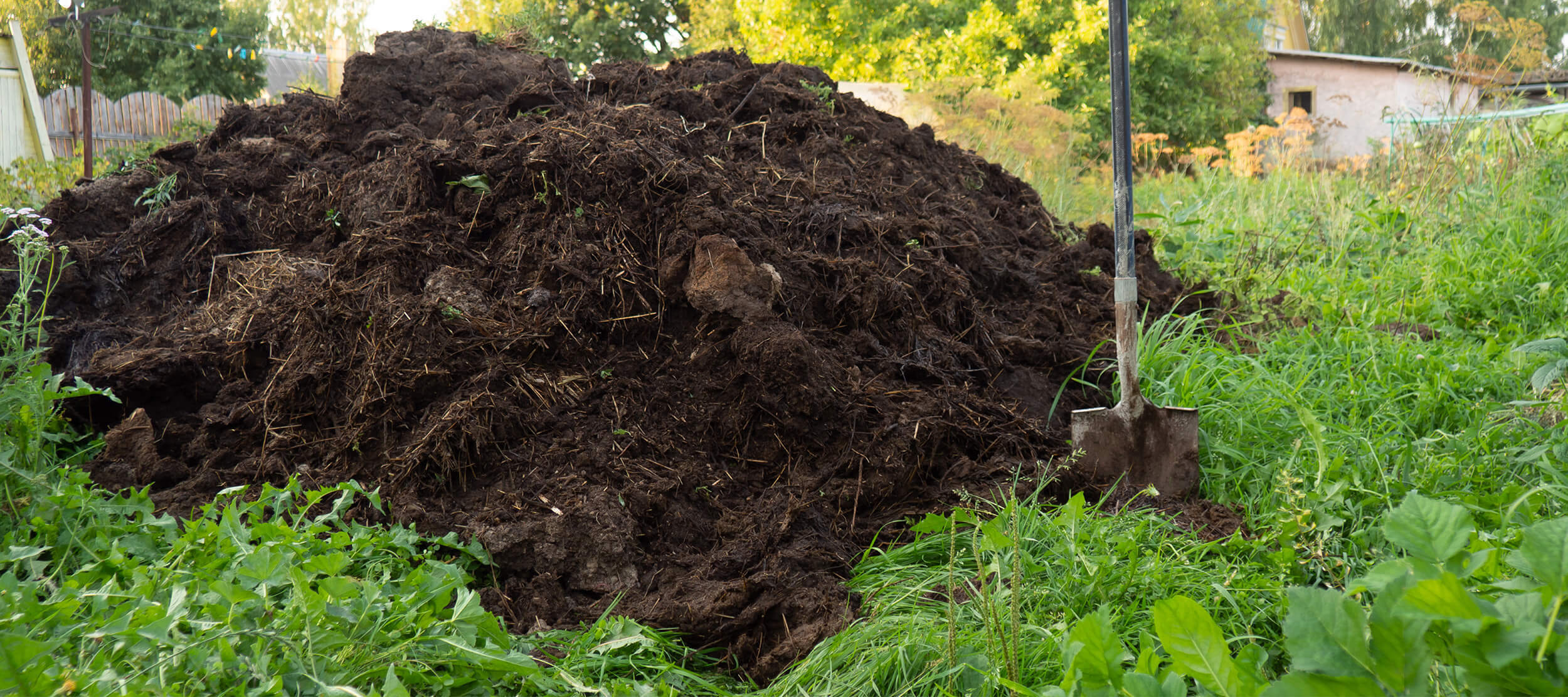October 18, 2023
You pick up an apple from the bowl on the counter. Before you take a bite, you realize it has a bad spot, so you throw it away.
Now imagine you throw away 974 more apples.
That’s how much food the average person in America wastes in one year.
What if we could find a way to keep that food waste out of our landfills?
Food waste is a global problem that affects us all. However, many communities are tackling this issue through community-wide food scrap collection initiatives, composting programs, and educational programs at area schools.

Composting: A Sustainable Solution
Composting is an effective way to reduce food waste and create nutrient-rich soil for lawns and gardens. Even if you have a small yard, you can use compost bins as an alternative to compost piles.
Compost bins and compost piles do need some seasonal care and maintenance. Here are some year-round composting tips to keep in mind:
- Start your compost in the fall — Autumn is the perfect time to start a compost pile or compost bin. If you’re starting a compost for the first time, you’ll want to add brown materials, green waste, and water. Brown materials include dry, dead leaves, corn stalks, or cardboard to name a few, and green waste includes food scraps or grass clippings (make sure the grass is not treated with any chemicals). Be careful when you add water — you want your compost pile moist, but not soggy.
- Prep the compost for winter — Remove your finished composted soil to make room for food scraps in the winter months. Food scraps can pile up quickly in the winter because decomposition is slower in colder months. You’ll know your compost is ready to use if the original organic matter is no longer recognizable and the compost is dark and crumbly with an earthy odor. Compost can either be spread in the garden in the fall or saved for spring. You can store finished compost in lidded bins or cover it with a tarp so that it doesn’t get too wet.
- Turn your compost pile — If you have a compost bin, you just need to turn the bin at least twice a week. If you have a compost pile, you’ll need a tool to be able to scoop and turn over your composting materials three to four times a week. There are a number of methods for composts that don’t involve any turning over of materials. Choose one that works best for you.

In fall, when pumpkins abound, consider adding them to your compost pile. Their decomposition improves soil and reduces landfill waste. Just make sure there are no seeds, candle wax, or other decorations on your pumpkins that wouldn’t benefit your compost pile. Other items ideal for the compost pile include:
- Coffee grounds and tea bags
- Uncoated cardboard
- Eggshells
- Fruits and vegetables
- Grass clippings
- Hay and straw
- Hair and fur
- Dry leaves
- Nutshells

Reducing Waste in Schools: A Joint Effort
Reducing waste in our homes may seem manageable, but what about in our communities and schools? If we start with easy-to-implement practices, students can play a vital role by disposing of food waste and recyclables correctly. Encouraging them to bring lunches from home packed with reusable items instead of single-use plastics and packaging is an excellent step towards sustainability.
The South Orangetown Central School District is taking it one step further by introducing composting and talking about what materials are recyclable. This program brings local experts to schools during lunchtime to show kids how to sort and dispose of food waste and recycle materials properly. Teaching younger generations the importance of waste reduction not only benefits the environment but also instills lifelong habits of sustainability.
Food Waste Reduction Initiatives in Our Communities
Many communities have joined together to not only reduce food waste, but also deploy food recovery programs to take edible yet unsellable food from restaurants, supermarkets, or institutional kitchens and bring them to shelters or food pantries to serve those in need.
Food Recovery Network
The Food Recovery Network is an initiative that began in 2011 when five students at The University of Maryland noticed that a large volume of food was going to waste on campus. They decided to do something about it, and the Food Recovery Network was born. Now, the Food Recovery Network is the largest student-based movement to fight food waste while also working to help end hunger in America.
Food Scrap Recycling Program
When we hear the word “recycling,” food scraps probably aren’t the first thing to come to mind. But in reality, when you drop off food scraps to be composted, you're recycling your food scraps into nutrient-rich soil that can be used for many purposes.
The community of Orangetown, NY is doing just that with its Food Scrap Recycling Program. When food scraps decompose in landfills they produce methane, a greenhouse gas that is 20 times more damaging than carbon dioxide. But when properly collected and composted, food scraps can help reduce pollution and improve overall quality of life. Orangetown residents bring bagged food scraps to Orangetown’s Food Scrap Drop-off Site to help divert food waste away from our landfills.

More Ways to Reduce Food Waste
By reducing food waste at home, in our schools, and in our communities, we can help reduce the amount of waste that ends up in our landfills, and help create composted soil to be used to aid the growing cycle. For more tips, resources, or information on how to reduce, reuse, and recycle, be sure to follow us and subscribe to our email list to stay up to date.
